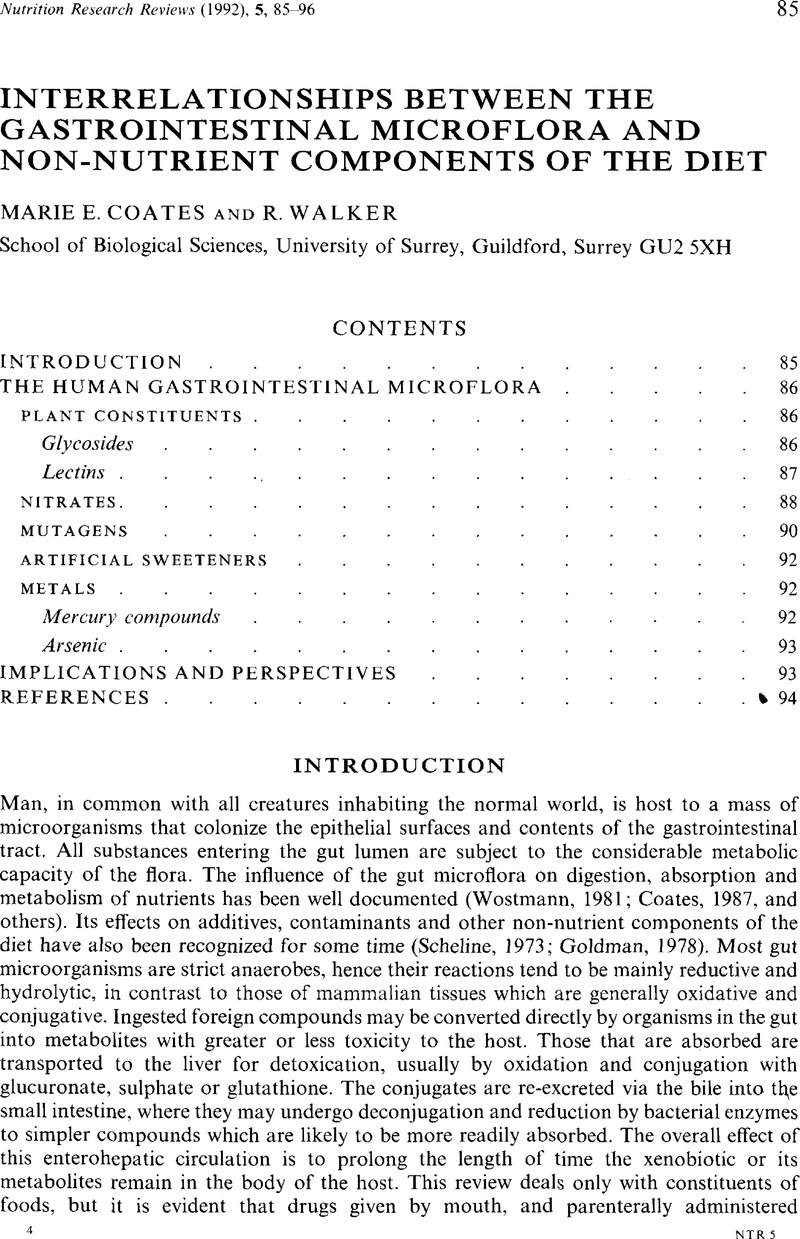Crossref Citations
This article has been cited by the following publications. This list is generated based on data provided by Crossref.
Tortuero, F.
and
Fernández, E.
1995.
Effects of inclusion of microbial cultures in barley-based diets fed to laying hens.
Animal Feed Science and Technology,
Vol. 53,
Issue. 3-4,
p.
255.
Eastwood, Martin
1997.
Principles of Human Nutrition.
p.
1.
Eisenbrand, G
Pool-Zobel, B
Baker, V
Balls, M
Blaauboer, B.J
Boobis, A
Carere, A
Kevekordes, S
Lhuguenot, J.-C
Pieters, R
and
Kleiner, J
2002.
Methods of in vitro toxicology.
Food and Chemical Toxicology,
Vol. 40,
Issue. 2-3,
p.
193.
2009.
Scientific Opinion on Arsenic in Food.
EFSA Journal,
Vol. 7,
Issue. 10,
p.
1351.
Jaswal, Vani
Palanivelu, Jeyanthi
and
C, Ramalingam
2018.
Effects of the Gut microbiota on Amygdalin and its use as an anti-cancer therapy: Substantial review on the key components involved in altering dose efficacy and toxicity.
Biochemistry and Biophysics Reports,
Vol. 14,
Issue. ,
p.
125.
Dey, Priyankar
Chaudhuri, Saumya Ray
Efferth, Thomas
and
Pal, Sirshendu
2021.
The intestinal 3M (microbiota, metabolism, metabolome) zeitgeist – from fundamentals to future challenges.
Free Radical Biology and Medicine,
Vol. 176,
Issue. ,
p.
265.
Zhang, Congcong
Zhang, Dingqi
Wang, Yongli
Zhang, Linzhang
Qi, Shenglan
Fang, Qinqin
Xu, Ying
Chen, Jiamei
Cheng, Xuemei
Liu, Ping
Wang, Changhong
and
Liu, Wei
2022.
Pharmacokinetics and anti-liver fibrosis characteristics of amygdalin: Key role of the deglycosylated metabolite prunasin.
Phytomedicine,
Vol. 99,
Issue. ,
p.
154018.
Kalaimathi, Karunanithi
Prabhu, Srinivasan
Ayyanar, Muniappan
Thiruvengadam, Muthu
Shine, Kadaikunnan
Vijaya Prabhu, Sitrarasu
and
Amalraj, Singamoorthy
2023.
Unravelling the Untapped Pharmacological Potential of Plant Molecules as Inhibitors of BACE1: In Silico Explorations for Alzheimer’s Disease.
Applied Biochemistry and Biotechnology,





